One of my absolute wildlife highlights was landing on the Bass Rock back in 2017. To be surrounded by many thousands of gannets was incredible – really awe-inspiring and very memorable. They are magnificent birds with beautiful beaks and startling blue rings round their eyes, and so elegant in flight.
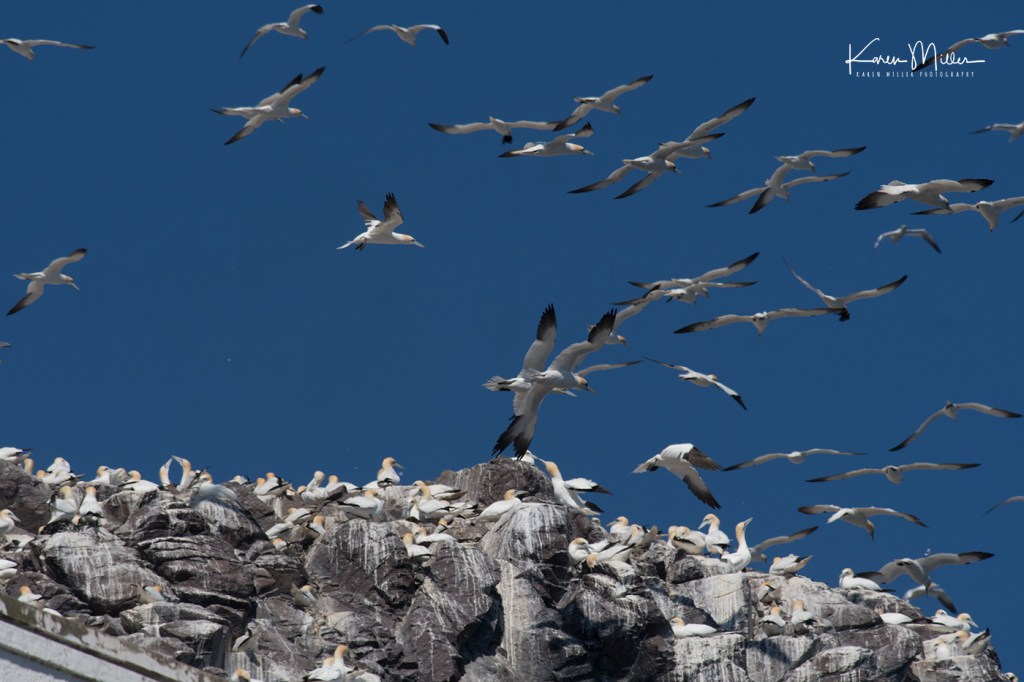
Aberdeenshire plays host to the largest UK mainland gannet/seabird colony at Troup Head. It’s not exactly close to Inverness, but it was near enough to spend a day there in the company of my parents during my final week in the Highlands. Not all the birds had arrived, but the sky was populated by a fairly large number of both gannets and fulmars, another lovely bird, both struggling with the strong winds.
It’s not the easiest place to find and isn’t sign-posted until you’re relatively close, then the signs are just small, square, RSPB images – you also have to drive through a working farm and at that point it’s easy to question if going in the right direction! Once the carpark is located though it’s not a particularly long walk along to the clifftop. Puffins nest here too, but as there probably weren’t very many back as yet we gave those a miss and headed straight to the gannet colony.
The cliff is pretty steep and due to the wind it was especially necessary to be quite careful. I confess I did lie on the ground and hang over the edge though in order to take some of these images. I was using my Nikon D500 with the Tamron 150-600mm, giving me a focal distance up to 900mm.

I find flying shots fairly easy, and it was made more straightforward by the wind.



Some birds were collecting nesting material. This individual however didn’t seem to know what to do with it and circled past me at least 5 or 6 times.
I also tried to photograph the gannets against both the cliff
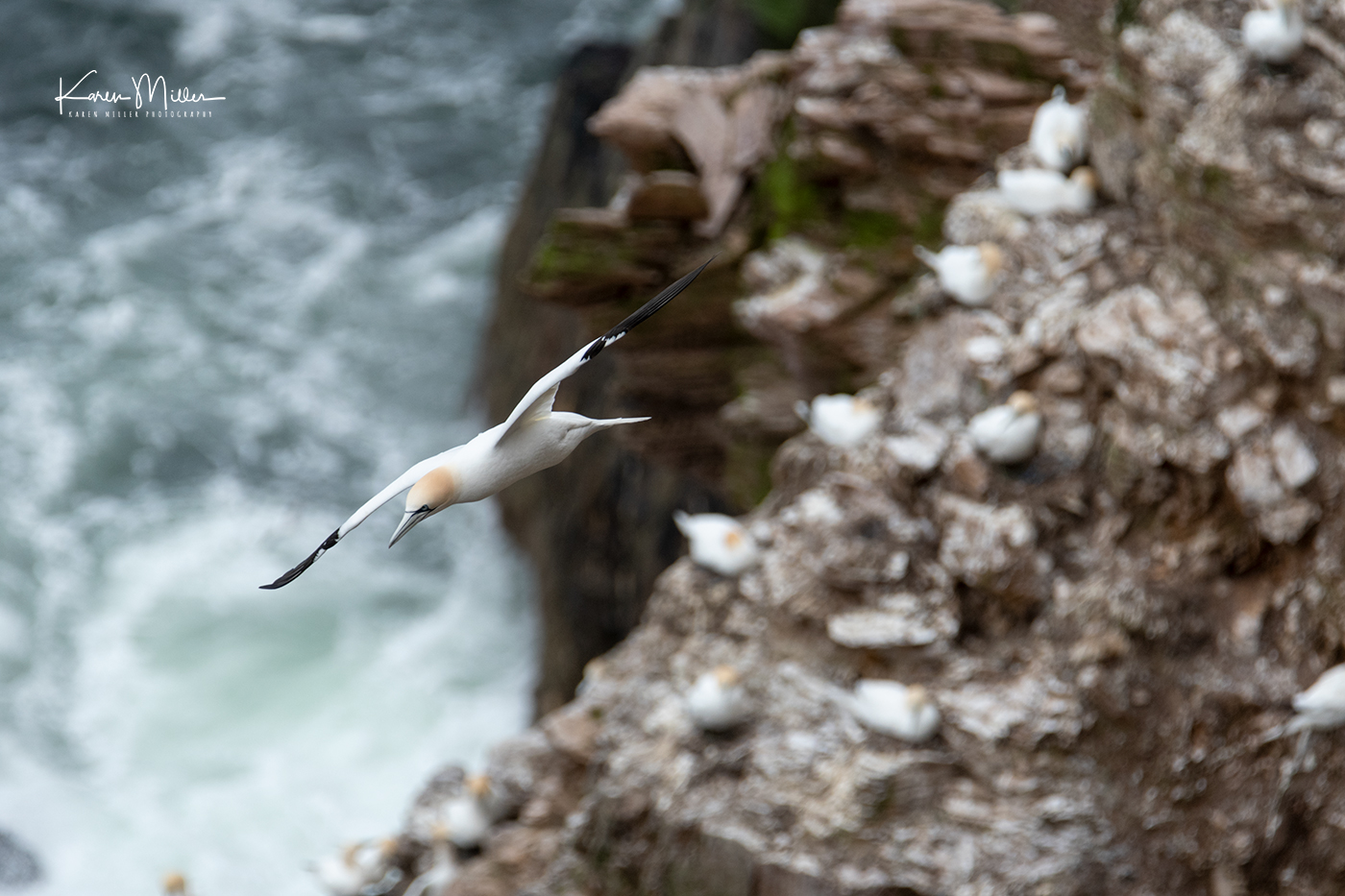
…and the sea, which, being quite rough, added a bit of drama I think.
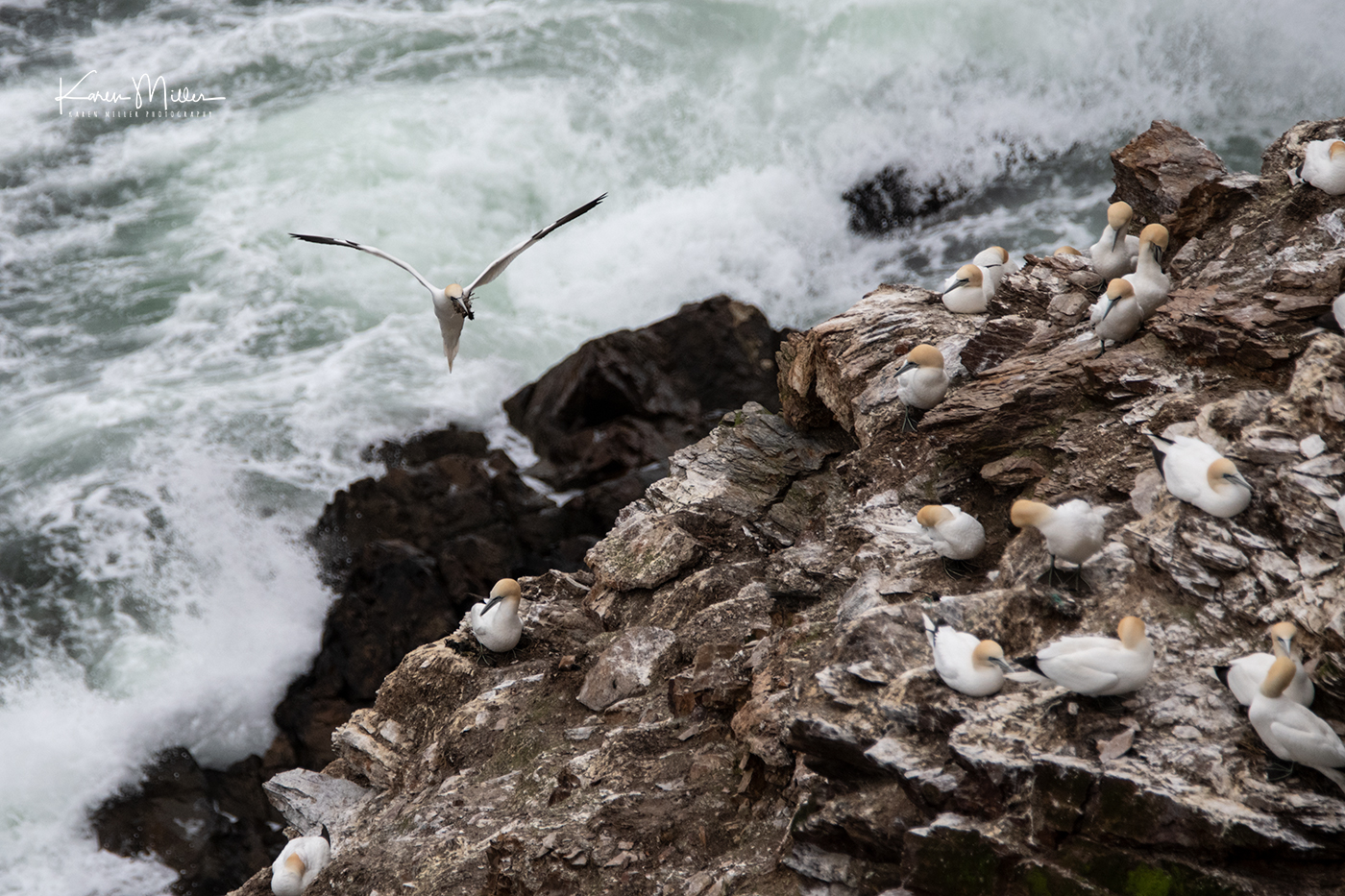

Photographing the gannets on their ledges was more challenging. Due to the fact only some of the birds had arrived, most had chosen nest sites quite far down the cliff. It took quite a bit of hanging over the edge in different locations to find photogenic birds – one of the problems with gannets is that there are often quite a few of them in one spot which doesn’t lend itself to clean images, and in this case bits of cliff and grass tended to get in the way too. I managed a handul I liked though.
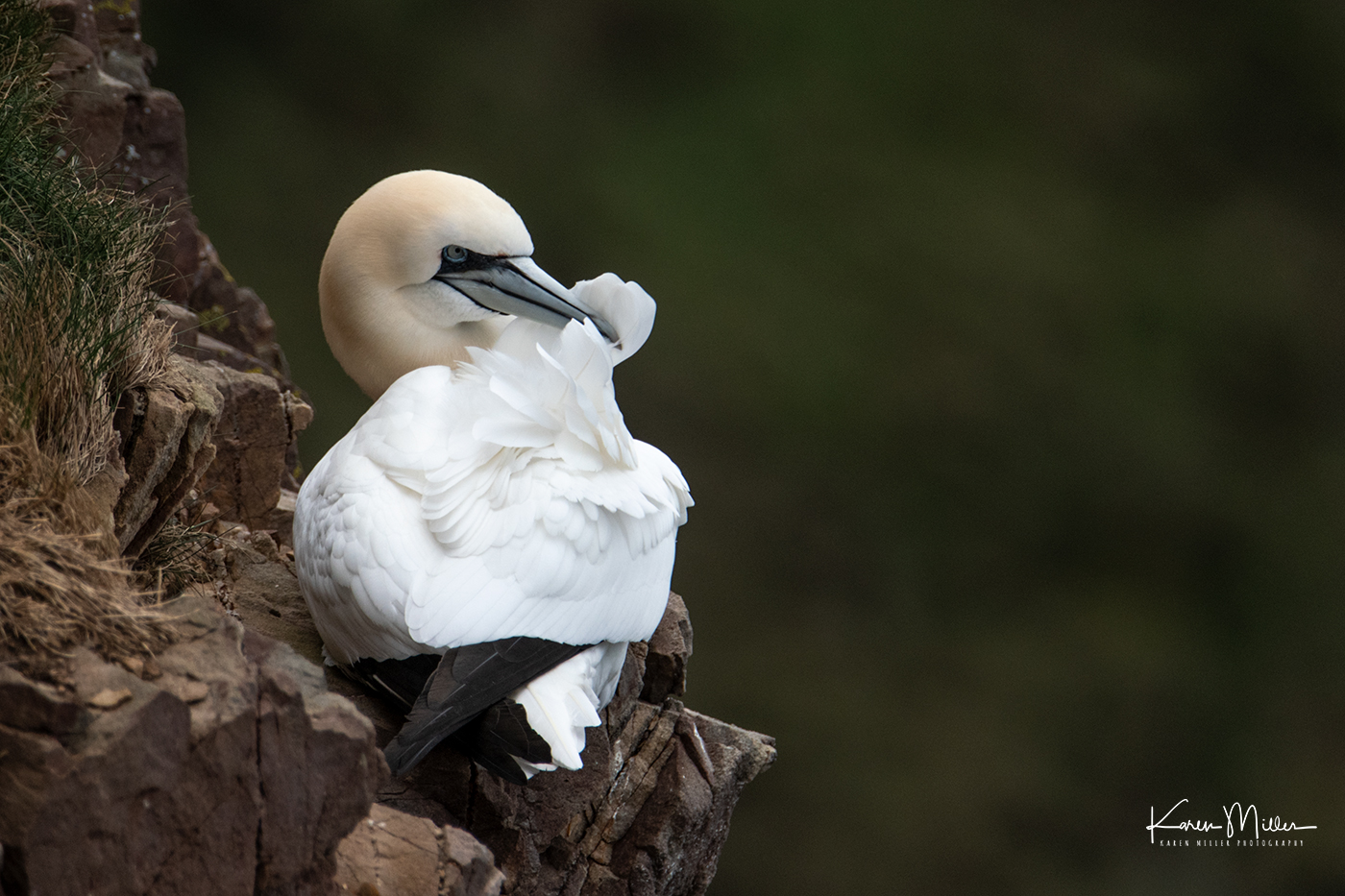

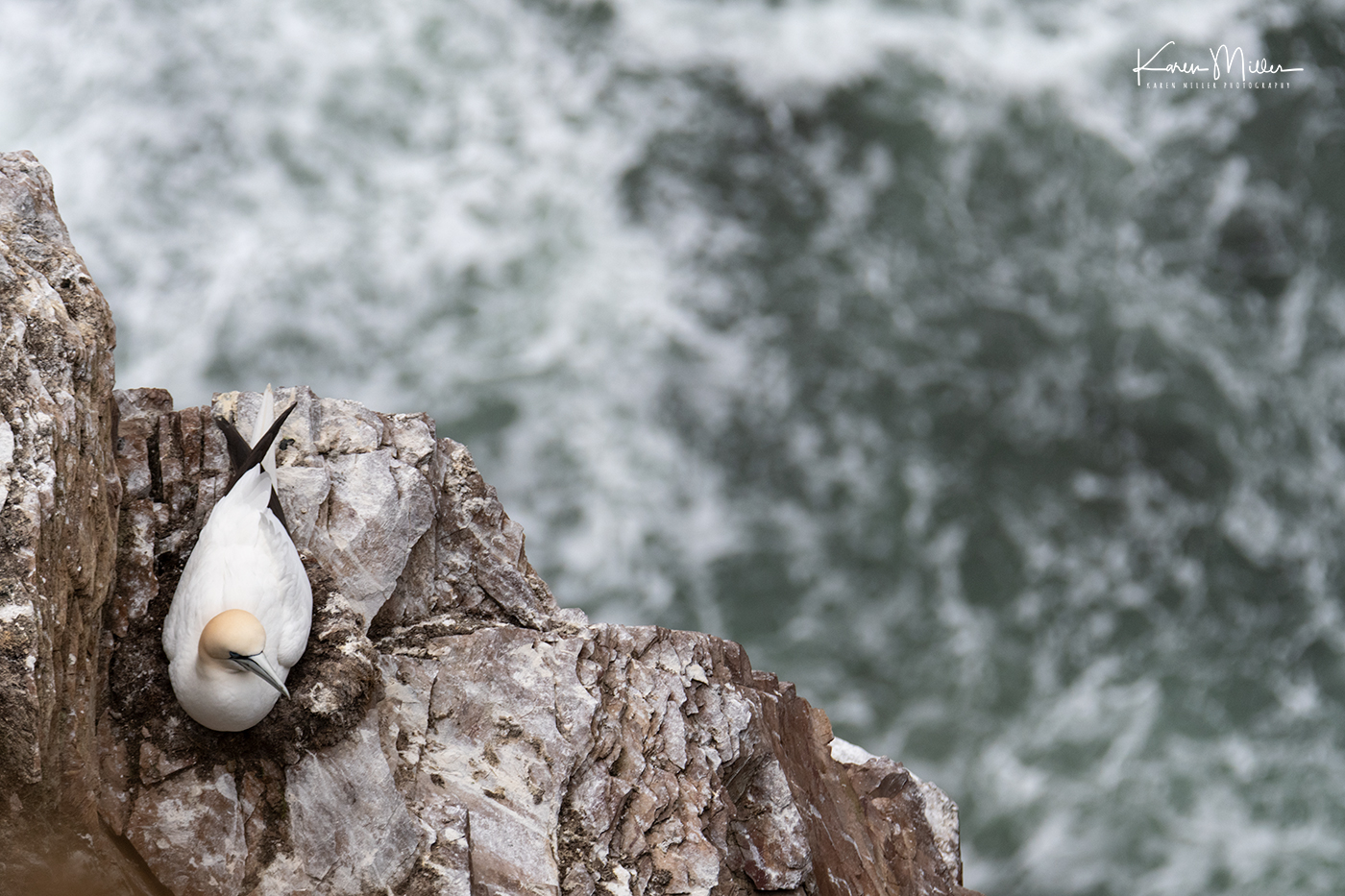
I especially like isolating a gannet’s head and neck. The lines on their beaks and their startling blue eyes are wonderful.

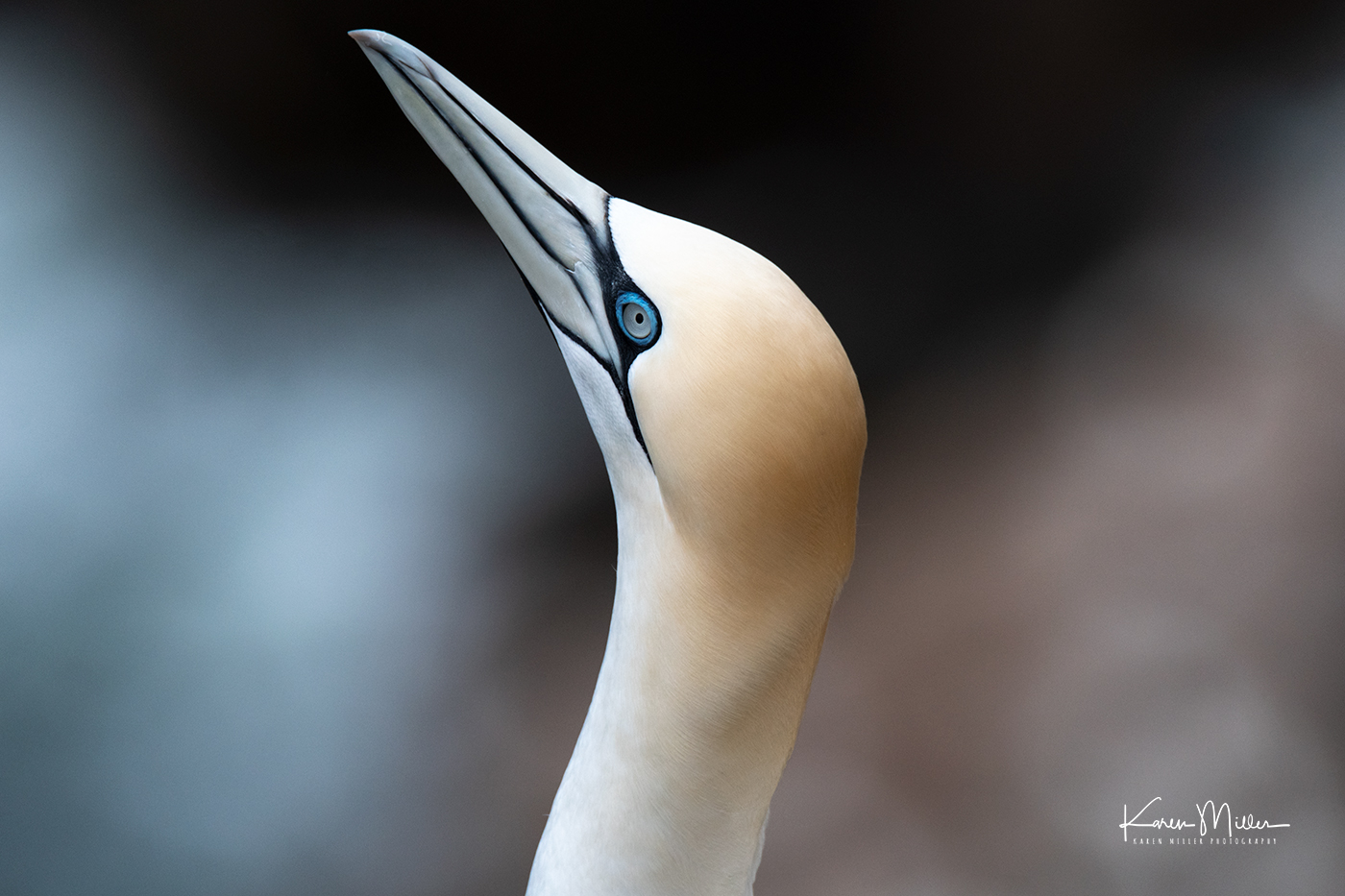
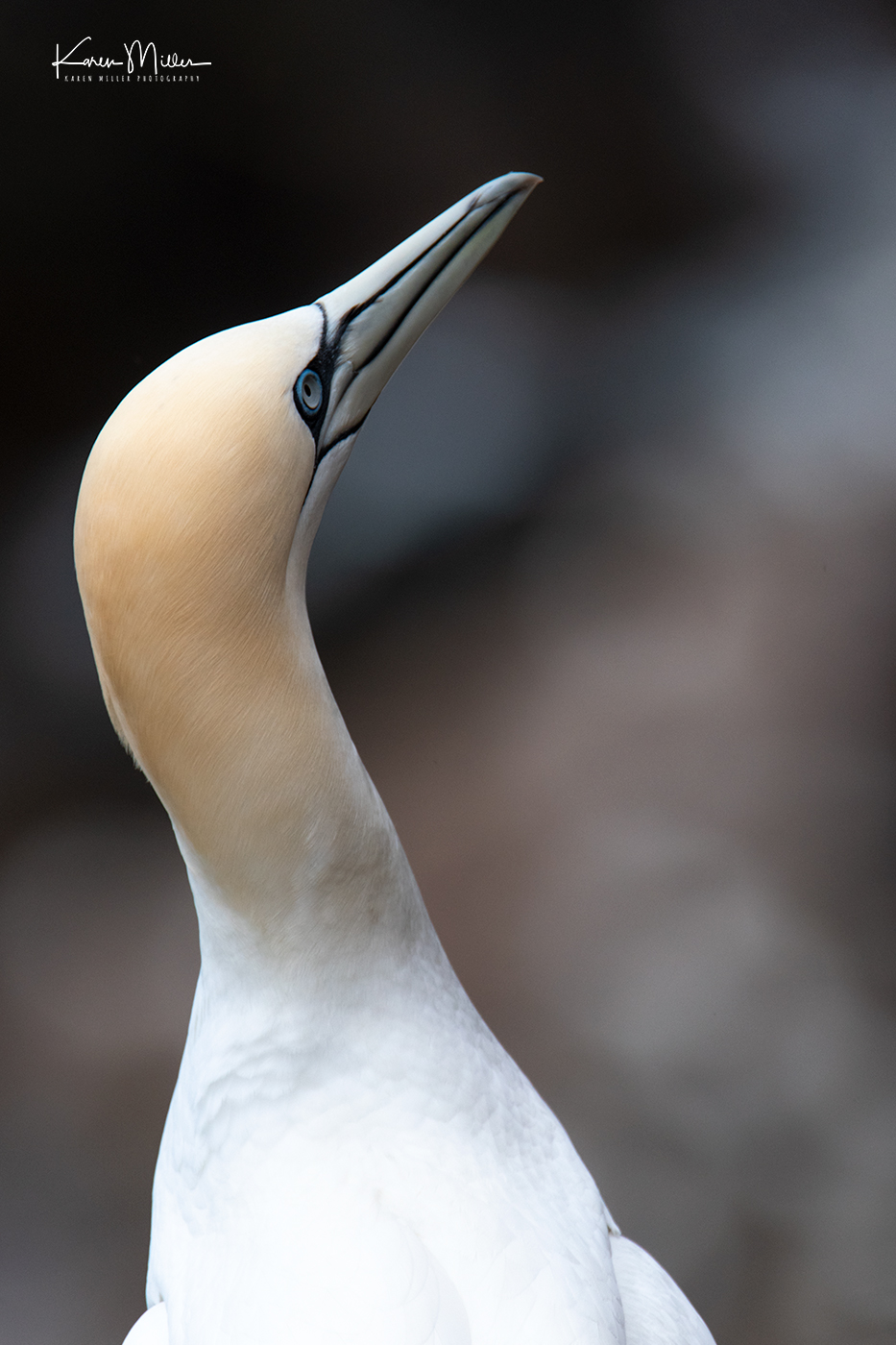

The other bird that had already made itself at home was the fulmar. These are lovely birds, members of the albatross family. When their beaks are shut they look as though they are smiling – I like that

…they can also look a little ferocious when calling out for their mate

They were really struggling in the wind though, and would hang in the air for ages and found it difficult to return to their nest site and partner. It did make photographing them a bit easier though.


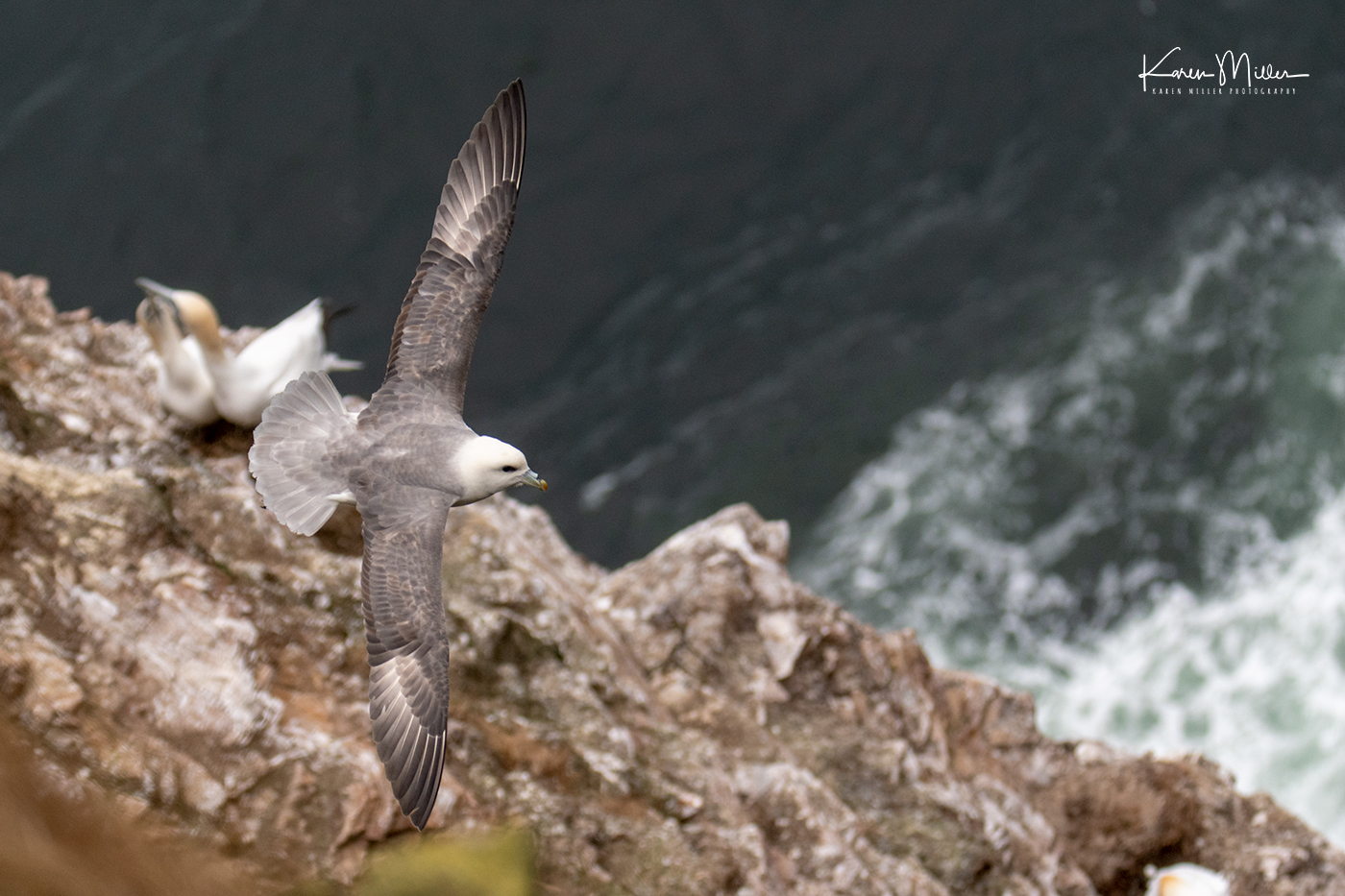
So that was my day! It’s not as good as landing on the Bass Rock, but it’s free(!) and more reliable (the Bass Rock landing trip is cancelled regularly due to the wind). It’s possible to get close to the birds and that is wonderful. Possibly not the place to go if you’re afraid of heights, but otherwise, highly recommended!



Lovely photography Karen but I’m a wee bit biased as the Gannet is my favourite bird. My brother and I visited Bass Rock in August and it was the quickest 3 hours we have ever spent, the time just flew by. Have you visited St Abbs Head for seabird photography as I was wondering if it was worthwhile driving the extra distance to Troup Head.
LikeLike
Thanks Rose. Yes, gannets are beautiful. I have been to St Abbs Head, and Troup Head is much better if you like gannets (lots of fulmars too). However at St Abbs Head, especially near the lighthouse there are lots of guillemots and kittiwakes. It’s a lovely spot. The whole coastline is great in the summer. My parents are in East Lothian, so I know the area quite well.
LikeLike